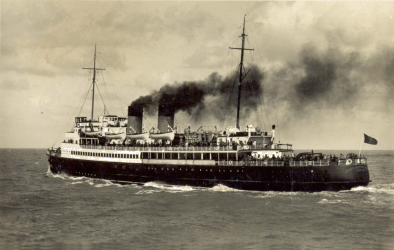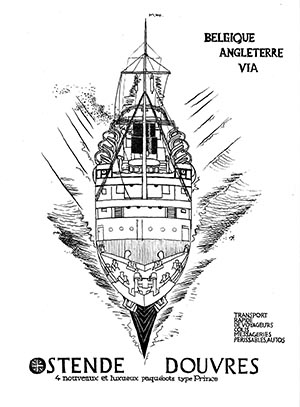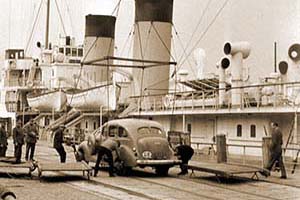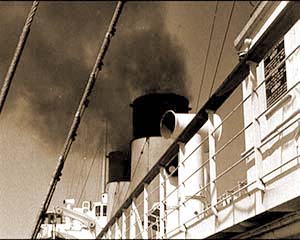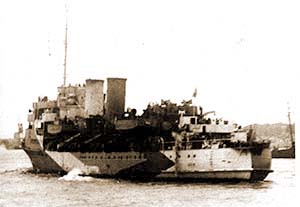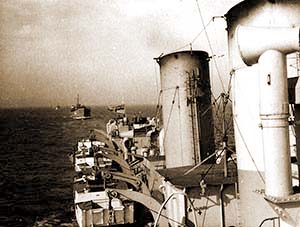De Prinses Joséphine Charlotte werd op 28 juni 1930 bij Cockerill als yardnummer 644 te water gelaten.
De driejarige prinses Josephine Charlotte, dochter van de knappe donkerharige kroonprins Leopold en Prinses Astrid, ging vorige week naar Antwerpen voor de stapelloop van de maalboot Prinsesse Josephine Charlotte. Een nieuw stoomschip voor de Oostende-Dover route. Omdat een fles champagne onhandelbaar zou zijn voor de kleine hoogheid had de bedrijfsdirectie een fel roze gekleurd lint van de scheepsboeg tot aan het lanceringsplatform vastgemaakt. Op het geschikte moment holde de Prinses Josephine Charlotte naar de rand van het lanceringsplatform en knipte het lint met een kleine vergulde schaar. Het schip gleed sierlijk in het water.
Midden in het gejuich van het publiek klonk een Koninklijk gejammer van hare hoogheid “Ik wilde dat niet doen mama, ik wilde de boot niet doen weggaan”.
De vierjarige zoon van de Antwerpse havendirecteur kwam ter hulp en kon de prinses gerust stellen door haar een grote matroospop met roze wangen te geven waarop in goud de letters S.S. Princesse Josephine Charlotte op de band van de muts stond.
Dit was het laatste schip in de bestelling van vier gelijke eenheden.Het was een periode waarin de lijn hoogdagen beleefde in het passagiersvervoer. Er was uiteraard de wereldtentoonstelling in Antwerpen maar de lijn had een stevige reputatie opgebouwd en wist dit ook te benutten. Het was in staat om op drukke weekenden dagelijks 10 tot 12 000 passagiers in- en te ontschepen op de Oostende kaai. Tijdens de moeilijke repressieperiode in 1932 wist de administratie dit aan te pakken door excursiereizen in te richten naar Dover en Folkestone. Dat jaar konden ze hiervoor 30 062 toeristen lokken. Door het succes wist men in 1933 het reisplan aan te vullen met bestemmingen als Calais en Boulogne en 52 793 gegadigden aan te spreken. Deze trend werd verder gezet en reizen naar Amsterdam, Rotterdam, London, Hastings, Margate en ander badplaatsen ingericht. De charme en het succes van de Prinses Joséphine Charlotte en de zusterschepen kon niet worden tegengesproken.
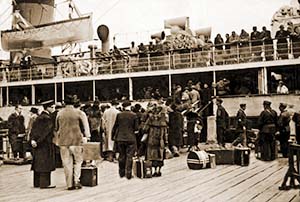
Een reisverslag Met de Maatboot naar Rotterdam:
Donderdag om 8 u. scheepten 320 reizigers in op de maalboot « Joséphine Charlotte » op weg naar Rotterdam. Het weer was buitengewoon heerlijk, de ingescheepten bijzonder goedgezind en de boot extra vast op de zee. Die in bezit waren van jumellen konden op hun gemak van uit een zetel de kusten schouwen en de aangenaamheid smaken de frissche zeelucht vrij en vrank in te ademen. Benevens de gezelligheid van het samenzijn genoot men ook van een opbeurend muziek door een pick-up mild" toegezonden. Ook was er, voor de dorstigen, wafels te bekomen in het wel ingericht buffet en voor de hongerige lekkere spijzen in de restaurantzaal. M. Bossant had aan die laatste operatie zijne beste zorgen besteed en wat nog het genot verhoogde waren de gematigde prijzen. Daarbij waren wij vergezeld van een boordcommissaris, M. Delahaye, de gedienstigheid zelve, die, binst gansch de reis, maar bezorgd was om zijne reizigers aangenaam te zijn, voegt daarbij een bevelhebber zooals M. Kesteloot en ge zult met mij besluiten dat wij in bezit waren van al wat den hemel geven kon.
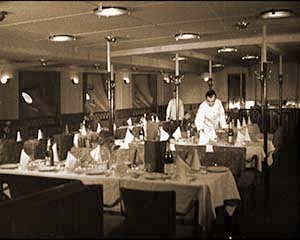
WOII
De Prinses Joséphine Charlotte deed op 9 mei 1939 de laatste commerciële overtocht naar Folkestone en vertrok wegens de oorlog uit Oostende op 16 mei 1940 naar Fokestone samen met de Prince Leopold en de Prince Philippe. Na aankomst in Folkestone op 17 mei werd ze ingezet om duizenden mensen naar Liverpool te brengen. Op 16 juni bracht ze nog achterblijvers naar Brest en Belgische troepen naar St. Nazaire.
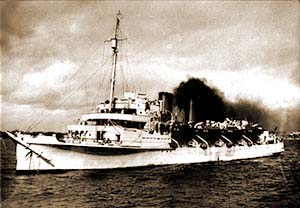
Terug op 18 juni in Falmouth werd beslist om het schip tot landingsvaartuig om te bouwen en vertrok op 5 oktober uit Southampton naar Falmouth. Op 16 mei 1941 werd ze dan omgedoopt tot “H.M.S. Prinses Joséphine Charlotte” en op 1 juni naar Inveraray gestuurd. Blijkbaar had de Prinses Joséphine Charlotte de daarop volgend periode met herhaaldelijk motorproblemen af te rekenen. Daarboven op 7 juli lag ze wegens het slechte weer voor anker in de Solent wanneer een vijandig vliegtuig een bom op het achterschip kon droppen dat het schip penetreerde en aan stuurboord zijde zo’n 17 meter verder buiten het schip ontplofte. In zijn baan door het schip was er veel schade aangericht en liep de tunnel onder water. Ook was er schade aan motorkamer en elektrische apparatuur met gevolg dat het schip voor enkele maanden was uitgeschakeld.
Pas in juni 1943 kon ze terug deelnemen aan de operaties in de Middellandse Zee. Tegen november in Falmouth schakelde ernstige defecten de Prinses Joséphine Charlotte terug uit tot maart 1944. Daarna werd ze voornamelijk ingezet voor het transport van troepen tussen de haven van België, Frankrijk en Engeland.
Op 1 oktober 1945 zat de taak erop en kon de Prinses Joséphine Charlotte terug naar België keren om voor commercieel trafiek terug te worden omgevormd.
In 1950 werd de Prinses Joséphine Charlotte als schroot verkocht.

